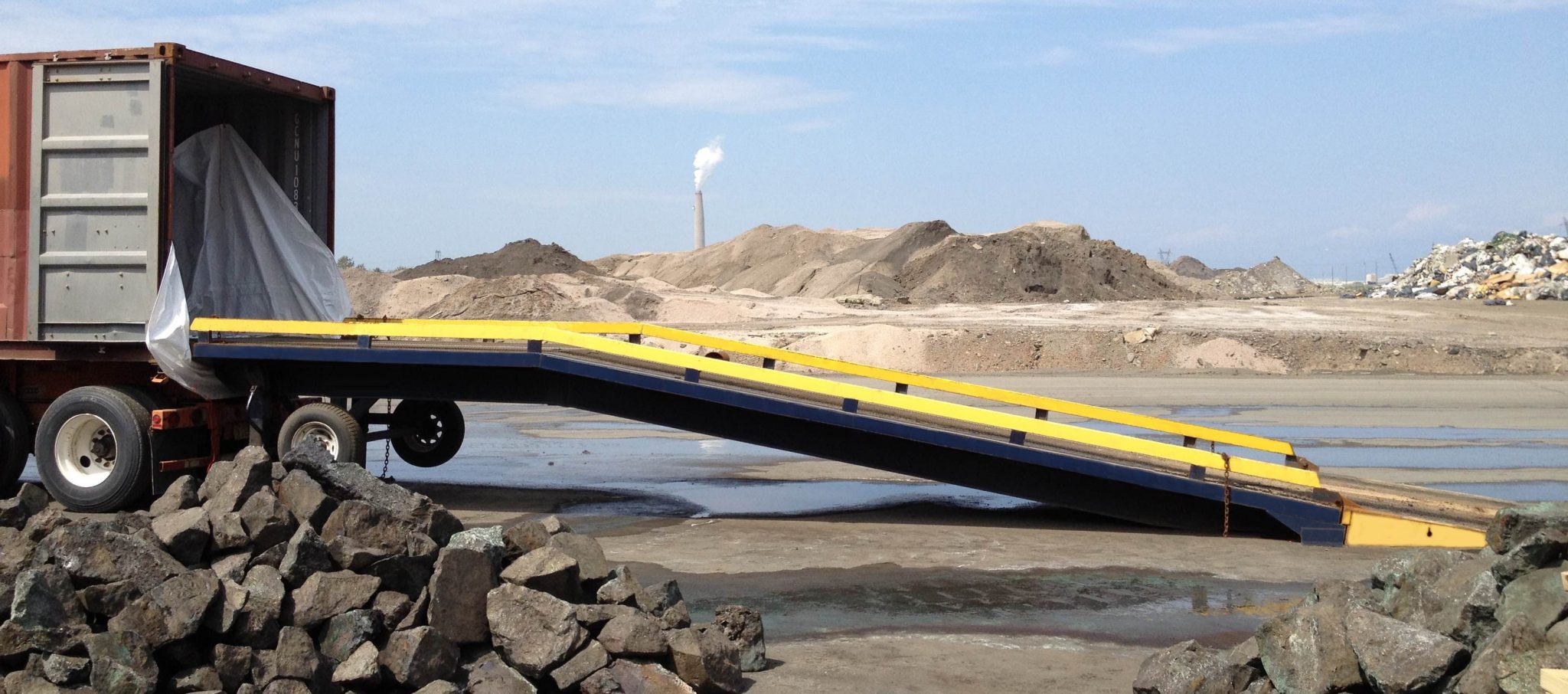
Adapt-A-Ramp’s exclusive Heavy-Duty Trailer Ramp Designs features aims to set higher industry standards using enhanced operational and safety designs. All truckload trailer types have their own operational benefits, but it’s important to know which trailer is best for your company’s freight needs. Trailers come in many different sizes and abilities, finding the correct one can make an immense difference in your shipping needs. To do so, it is crucial to determine the exact size and dimensions of your cargo, and how it will be loaded on the trailer.
Dry Van Trailers
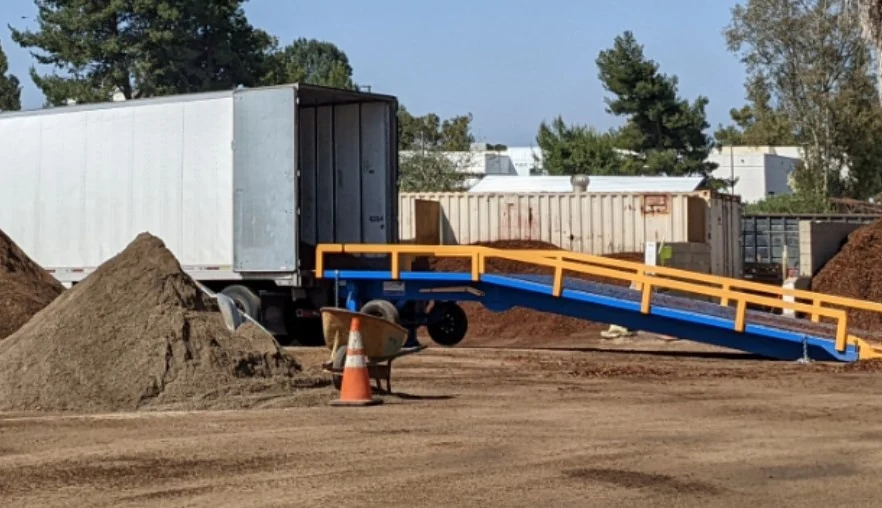
A dry van trailer is an enclosed trailer that is commonly used to transport non-perishable freight. Dry van trailers are the go-to solution for pallet-based, boxed, or loose, non-perishable commodities. This trailer type typically has a rear door and is generally 53’ long. Dry van trailers are fully enclosed boxes designed to transport a wide range of freight safely and securely. Each trailer can haul up to 45,000 lbs. The box-like shape makes dry van trailers the ideal trailer type for shippers and receivers. The shape of this trailer type gives it the ability to back into loading dock doors for easy and efficient shipping and receiving.
Flatbed Trailers
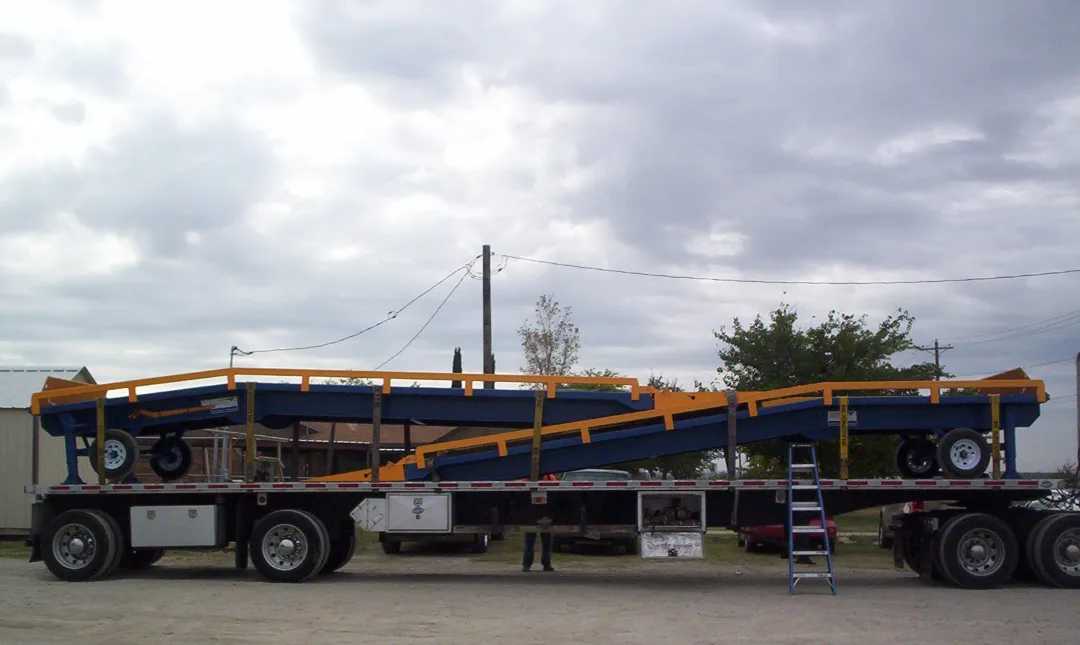
Flatbed trailers are commonly used because of their versatility and ability to load product on its tip, sides, and rear, allowing for easy loading and unloading. Since flatbed trailers do not have an enclosed container to contain cargo, it makes this trailer type to be the most effective for hauling steel, construction and farming equipment, lumber, and other open-air commodities. Due to the lack of container, it is important to secure the cargo on flatbed trailers with heavy duty equipment like tarps, tiedown straps, or transport chains/binders.
Drop-deck/Step-deck Trailers
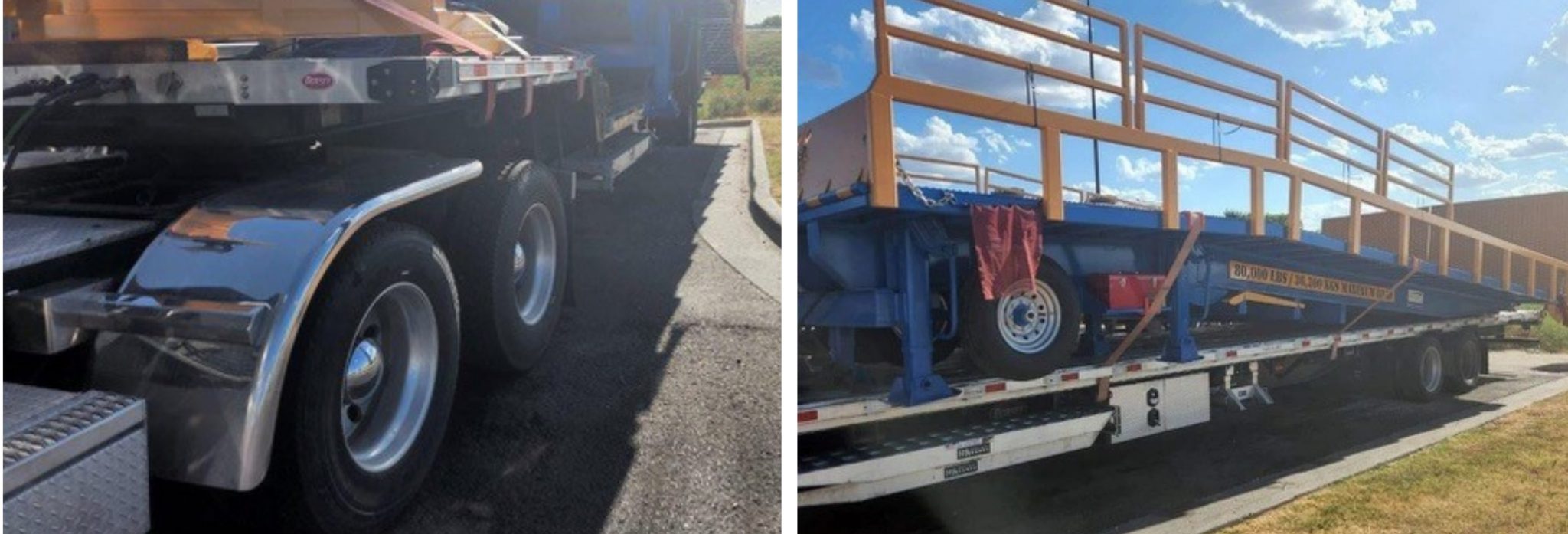
Drop deck or step-deck trailers act as an alternative to flatbeds when loads cannot transport on a flatbed trailer due to the freight’s height. A standard flatbed trailer tends to be 60” above ground, however, step-deck/drop deck trailers are closer to the ground to provide leverage for carrying taller loads. A drop-deck trailer can have two deck levels and has a ramp for unloading. The height of a drop deck makes it safer for unloading by a forklift since they are much closer to the ground.
Wide Load
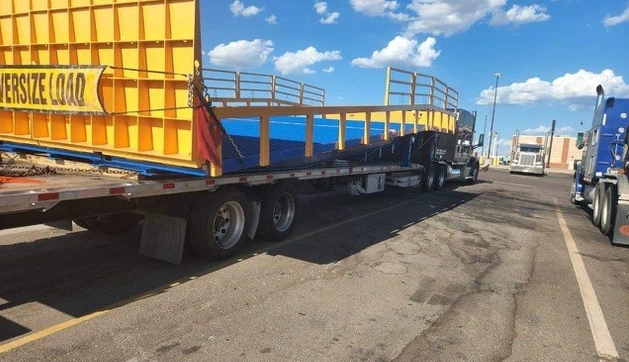
Both flatbed and drop-deck trailers can be used for specialty, wide load, and oversized freight needs. A wide load or oversized load can be any load that exceeds the maximum legal height, width, or length. Legal dimensions vary depending on the province or state in which that load is being transported in or through. Generally, the maximum legal width of a load is 8.5’ and the maximum height limit range is 13.5-14.5’ tall. Once the width of the load exceeds 8.5’ are considered oversized and require state/province permit. Most states do not require escort vehicles for loads that are no more than 10 feet wide, while a few states require escort vehicles for all oversize loads. Depending on the type and size of the load, only one, or two escort vehicles will be required.
At Adapt-A-Ramp we have the capability of building a variety of portable loading ramps that can be used with just about any transport truck. Just like truckload trailers, all Adapt-A-Ramp loading ramp options can come in a wide variety of dimensions and abilities to make loading and unloading easier, efficient, and tailored to your company’s unique operational needs. Give us a call at 888-986-RAMP for more information.
